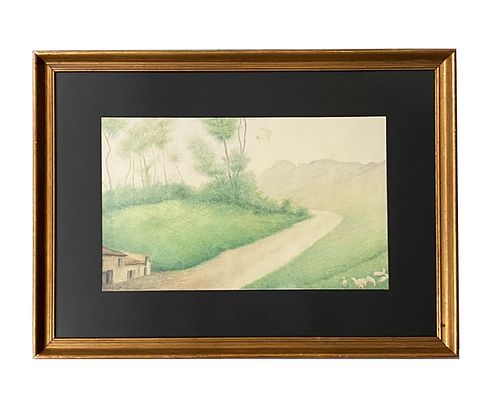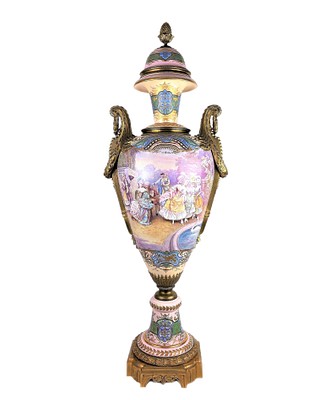Andrew Michael Dasburg (1887 - 1979) France
Lot 168
About Seller
Coral Gables Auction LLC
2377 Coral Way
Coral Gables, FL 33145
United States
We are an auction house with a lot of knowledge of our work environment. We recited at Miami FL. We have professionals with more than 30 years of experience. We work hard to provide our subscribers with the best descriptions of the auctioned pieces and their provenance, in addition to providing good...Read more
Categories
Estimate:
$2,000 - $3,000
Absentee vs Live bid
Two ways to bid:
- Leave a max absentee bid and the platform will bid on your behalf up to your maximum bid during the live auction.
- Bid live during the auction and your bids will be submitted real-time to the auctioneer.
Bid Increments
| Price | Bid Increment |
|---|---|
| $0 | $25 |
| $500 | $50 |
| $1,000 | $100 |
| $3,000 | $250 |
| $10,000 | $500 |
| $20,000 | $1,000 |
| $50,000 | $2,500 |
| $100,000 | $5,000 |
| $200,000 | $10,000 |
| $500,000 | $25,000 |
About Auction
By Coral Gables Auction LLC
Jan 16, 2022
Set Reminder
2022-01-16 13:00:00
2022-01-16 13:00:00
America/New_York
Bidsquare
Bidsquare : Fine & Decorative Arts Online Auction #021
https://www.bidsquare.com/auctions/coral-gables-auction-llc/fine-decorative-arts-online-auction-021-8688
This auction has 300 pieces. There is a great variety of paintings and decorative pieces Coral Gables Auction LLC coralgablesauction@yahoo.com
This auction has 300 pieces. There is a great variety of paintings and decorative pieces Coral Gables Auction LLC coralgablesauction@yahoo.com
- Lot Description
Andrew Michael Dasburg (1887 - 1979) France
Pastel and Pencil on Paper
Measure 11 1/2"in H x 19"in W and 20"in H x 27 1/2"in W with frame
Known for: Modernist landscape, portrait and still-life painting
Name variants: Michael Dasburg, Andrew Michael Dasbury
Biography: Raised in Germany, Dasburg came to the United States with his mother in 1892. He studied at the Art Students League with Kenyon Cox and DuMond, privately in Woodstock with Birge Harrison and at the New York School of Art with Henri. He studied in Paris in 1908, the same year as Benton, returning in 1911. "Young Andrew Dasburg abandoned the tepid manners he had learned from Kenyon Cox and soon painted a vase of tulips with the rugged force of Cezanne and reduced American trees and roof tops to their underlying shapes and colors." He exhibited three oils and a sculpture at the epochal 1913 Armory Show, acting as the butt of the critic Thomas Craven's dated denunciation, "What find old American families were represented! Bouche, Dasburg, Halpert, Kuniyoshi, Stell, Zorach—scions of our colonial aristocracy!" In 1923 Dasburg was one of the leading proponents of Cubism. From there, he progressed toward "pure" art, but later returned to a modified version of Cubism, finding "in the landscape of the Southwest an apt vehicle for his Cubist vision." Dasburg had visited New Mexico in 1917 at the urging of Maurice Sterne, and finally settled in Taos in 1930. Applying Cezanne and Cubism to New Mexico produced both powerful Western landscapes and a shock wave for New Mexico artists. His new European ideas affected even the older Taos group, Higgins, Berninghaus, and Blumenschein. As an influence for pioneering modernism, for re-evaluating the same subjects originally painted by Couse and Ufer, Dasburg was of the greatest importance in New Mexico. In turn, Dasburg became less abstract. - Shipping Info
-
For Shipping Information Please send Email to info.coralgablesauction@yahoo.com
-
- Payment & Auction Policies
-
Available payment options
-
-
- Buyer's Premium



 EUR
EUR CAD
CAD AUD
AUD GBP
GBP MXN
MXN HKD
HKD CNY
CNY MYR
MYR SEK
SEK SGD
SGD CHF
CHF THB
THB






















